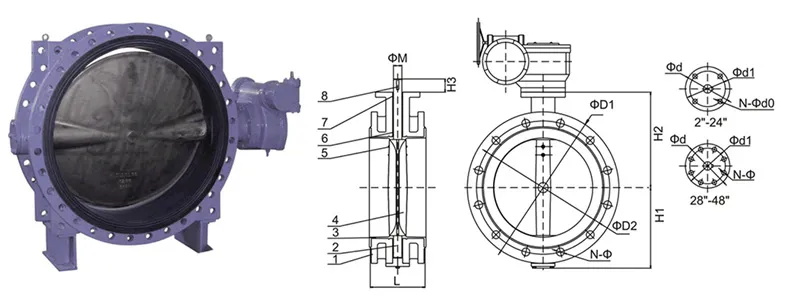Des . 21, 2024 07:23 Back to list
quiet check valve
Understanding Quiet Check Valves A Comprehensive Overview
In various piping systems, maintaining optimal performance while reducing noise levels is crucial for both operational efficiency and comfort. One of the key components that addresses these needs is the quiet check valve. This article explores the features, benefits, and applications of quiet check valves, elucidating why they have become an integral part of modern fluid control systems.
What is a Quiet Check Valve?
A quiet check valve is a type of valve designed to allow fluid to flow in one direction while preventing backflow. Unlike standard check valves, which can create significant noise due to the rapid closure of their mechanisms, quiet check valves use innovative design features to minimize noise and water hammer effects. They typically use a soft closing mechanism, such as a spring-loaded disc or a weighted flap, that slowly closes the valve when the flow reverses. This gradual closure reduces the impact on the sealing surface, thereby mitigating noise and vibration.
Key Features
1. Noise Reduction The primary advantage of using a quiet check valve is the significant reduction in noise associated with fluid dynamic changes. The soft closure mechanism prevents sudden slamming, a common cause of noise in traditional check valves.
3. Versatile Materials Quiet check valves can be made from a variety of materials depending on the application, including brass, stainless steel, and PVC. This versatility ensures compatibility with different fluids and environmental conditions.
4. Compact Design Many quiet check valves feature a compact design that allows for easy installation in tight spaces. This is particularly beneficial in residential or commercial settings where space may be limited.
quiet check valve

Benefits of Using Quiet Check Valves
1. Improved Comfort In plumbing systems, excessive noise can be a source of discomfort for occupants. Quiet check valves greatly enhance the overall comfort level by reducing audible disturbances caused by water flow.
2. Increased Efficiency Because they minimize water hammer and other pressure fluctuations, quiet check valves contribute to a more stable system performance. This stability translates into increased efficiency and reduced energy consumption.
3. Enhanced Safety By preventing backflow and the associated risks of contamination, quiet check valves play a critical role in maintaining the safety of water supplies. This is especially important in medical, food processing, and chemical applications where purity is paramount.
4. Cost-Effectiveness Although quiet check valves may come with a slightly higher initial cost than standard check valves, their longevity and the reduction in potential system damage often lead to significant savings over time.
Applications
Quiet check valves are utilized across various industries and sectors. In residential plumbing, they prevent backflow in domestic water systems, while in commercial applications, they are used in HVAC systems to maintain steady airflow and minimize noise. Additionally, they play crucial roles in fire protection systems, wastewater treatment, and chemical processing, where efficient, reliable, and quiet operation is essential.
Conclusion
In summary, quiet check valves represent a reliable solution for those seeking to improve the efficiency and comfort of fluid control systems. With their noise-reducing features and wide range of applications, these valves are an excellent investment for both residential and industrial environments. As technology continues to advance, the role of quiet check valves will undoubtedly become even more significant, ensuring safe, efficient, and peaceful operation in fluid management systems.
Share
-
Reliable Wafer Type Butterfly Valves for Every IndustryNewsJul.25,2025
-
Reliable Flow Control Begins with the Right Ball Check ValveNewsJul.25,2025
-
Precision Flow Control Starts with Quality ValvesNewsJul.25,2025
-
Industrial Flow Control ReliabilityNewsJul.25,2025
-
Engineered for Efficiency Gate Valves That Power Industrial PerformanceNewsJul.25,2025
-
Empowering Infrastructure Through Quality ManufacturingNewsJul.25,2025